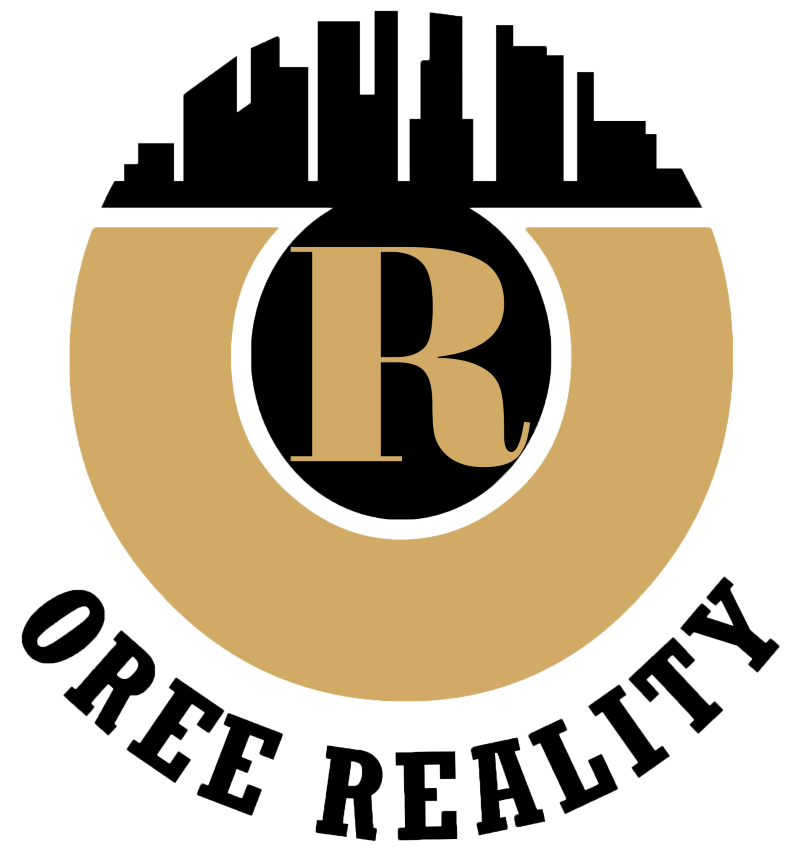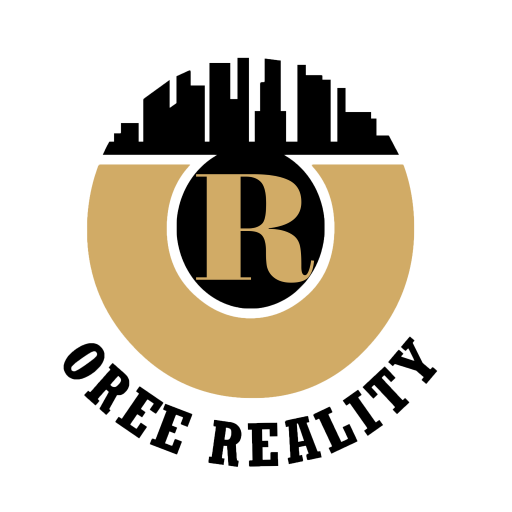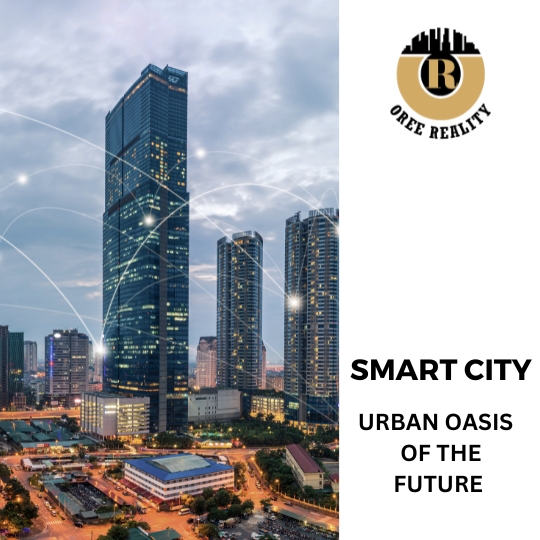Urban Oasis Of The Future : Smart Cities
Urban Oasis Of The Future : Smart Cities
Building Smart Cities for enhanced living conditions
Smart cities are the urban oasis of the future, designed to maximize efficiency, sustainability, and the overall quality of life for their residents. Real estate developers, often seen as the architects of our cities, play a pivotal role in transforming this vision into reality. In this blog post, we’ll explore how real estate developers are pioneering the development of smart cities, setting the stage for enhanced liability.
Urbanization is an undeniable global trend, with more and more people choosing city living. As of now, over 55% of the world’s population resides in urban areas, a figure projected to surge to 68% by 2050, according to the United Nations. While urbanization offers opportunities and access to resources, it also presents significant challenges, from congestion and pollution to resource management. In response to these challenges, a new vision of urban living is taking shape: the smart city.
The urban oasis of the future is Smart Cities.
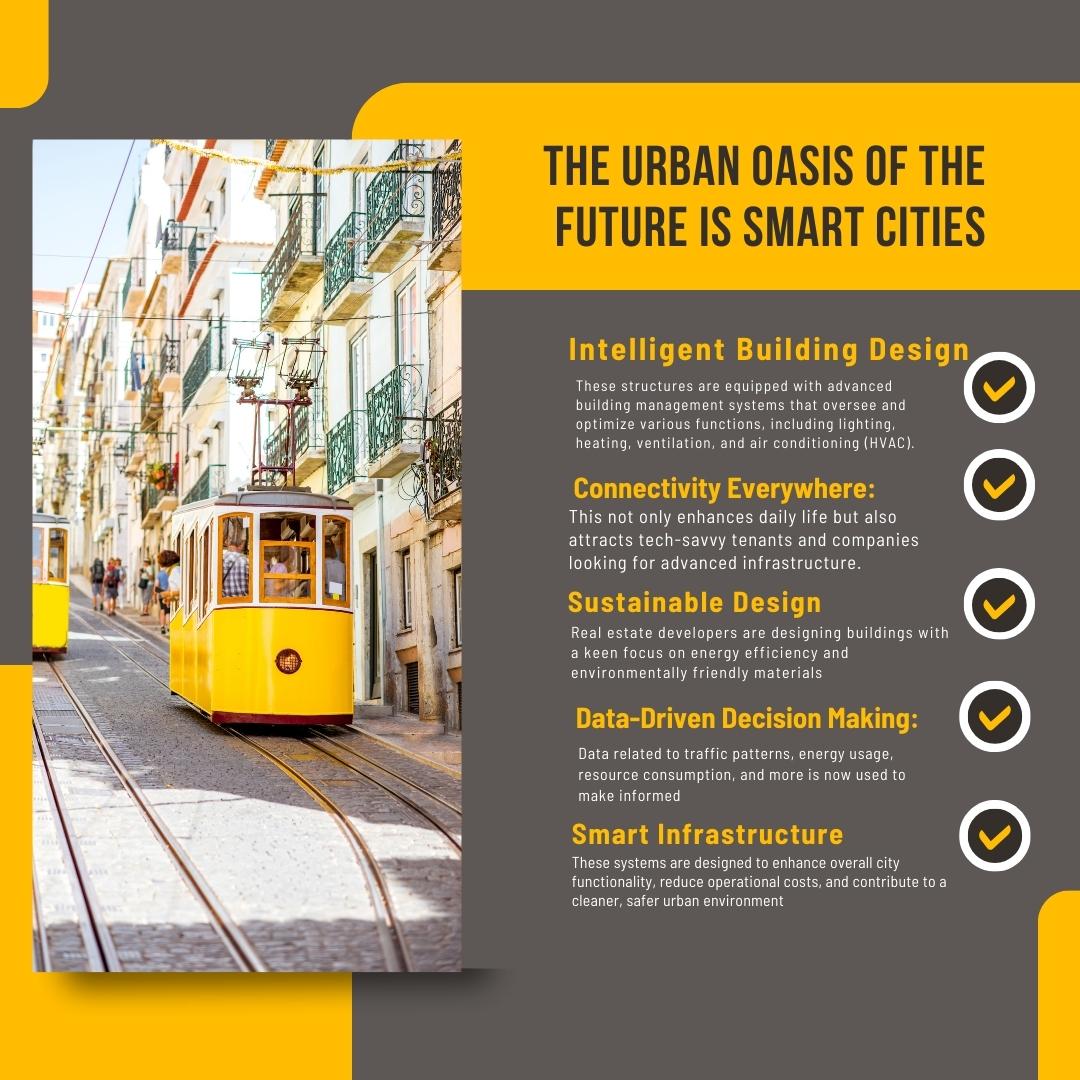 1. Intelligent Building Design:
1. Intelligent Building Design:
Modern real estate developers are committed to constructing intelligent buildings. These structures are equipped with advanced building management systems that oversee and optimize various functions, including lighting, heating, ventilation, and air conditioning (HVAC). These systems ensure maximum energy efficiency and comfort for occupants. Additionally, predictive maintenance minimizes downtime and reduces operating costs, thus ensuring a better and more sustainable l iving experience.
2. Connectivity Everywhere:
Smart cities thrive on connectivity. Developers are integrating high-speed internet and 5G infrastructure into their projects, ensuring that residents and businesses are always connected. This not only enhances daily life but also attracts tech-savvy tenants and companies looking for advanced infrastructure.
3. Sustainable Design:
Sustainability is at the core of smart cities. Real estate developers are designing buildings with a keen focus on energy efficiency and environmentally friendly materials. The integration of renewable energy sources, such as solar panels and wind turbines, significantly reduces both the environmental impact and operational costs, making these cities more eco-friendly.
4. Data-Driven Decision Making:
Real estate developers are no longer working in the dark. They’re collecting and analyzing data to inform urban planning and design. Data related to traffic patterns, energy usage, resource consumption, and more is now used to make informed decisions about future projects and to fine- tune existing ones. This approach results in more efficient and sustainable city operations.
5. Smart Infrastructure:
Smart cities feature advanced infrastructure components, such as intelligent traffic management systems, waste collection optimization, and real-time monitoring of water usage. These systems are designed to enhance overall city functionality, reduce operational costs, and contribute to a cleaner, safer urban environment.
Benefits of Smart Cities for City Dwellers
The integration of smart technology by real estate developers in smart cities yields a wide range of benefits for urban residents.
Enhanced Efficiency:
Smart cities are more resource-efficient, with optimized transportation systems, streamlined waste management, and more responsive city services
Improved Quality of Life:
Residents enjoy a range of benefits, including cleaner air, reduced traffic congestion, heightened security, and improved access to services
Sustainability :
Lower energy consumption, improved waste management, and environmentally conscious construction methods contribute to an environment friendly urban city.
Economic Opportunities:
Smart cities often attract businesses and job opportunities, stimulating economic growth and enhancing the prosperity of the city’s residents
Now we know what smart cities are but what benefit does it provide us?
- As we discussed smart cities use data to manage resources effectively
- This helps the city to provide better facilities to users at lower infrastructure costs
- It helps in providing its citizens with safety and security. Smart cities improve overall public
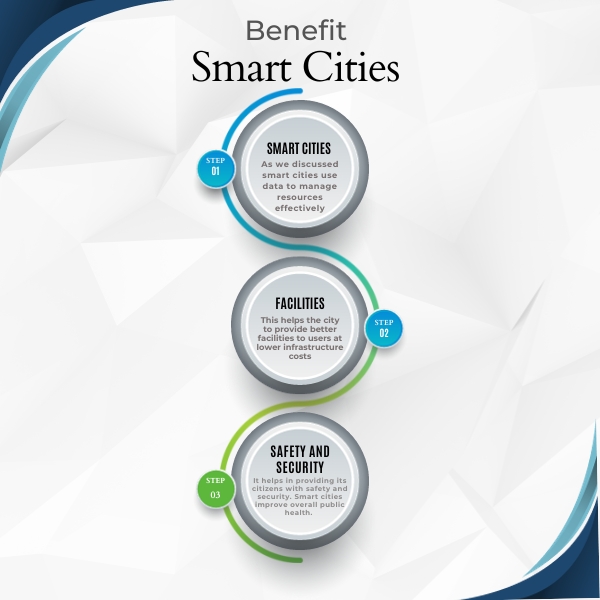 The Vision of Smart Cities
The Vision of Smart Cities
Smart cities are a response to the complexities of modern urban living. They leverage technology, data, and innovative design to enhance infrastructure, streamline services, and create environments that are efficient, sustainable, and inviting. The central aim is to improve the quality of life for city dwellers. Real estate developers are instrumental in turning this vision into a tangible reality. They are not just building structures; they are crafting the foundation of our urban future. Here’s how developers are leading the charge
The synergy of real estate development and smart city technology promises a brighter future for urban living. As developers continue to embrace this vision, cities will become more efficient, sustainable, and, ultimately, more livable. The process is ongoing, and the vision is constantly evolving.
Conclusion
Real estate developers are not just building structures; they are visionary architects shaping the Urban Oasis of the Future, Smart Cities of tomorrow. Through the integration of smart technology and forward-thinking design, they are creating urban spaces that are not only more efficient but also more livable. Smart cities are poised to be the urban oases of the future, where technology and innovation blend seamlessly with the aspirations and well-being of their residents.
